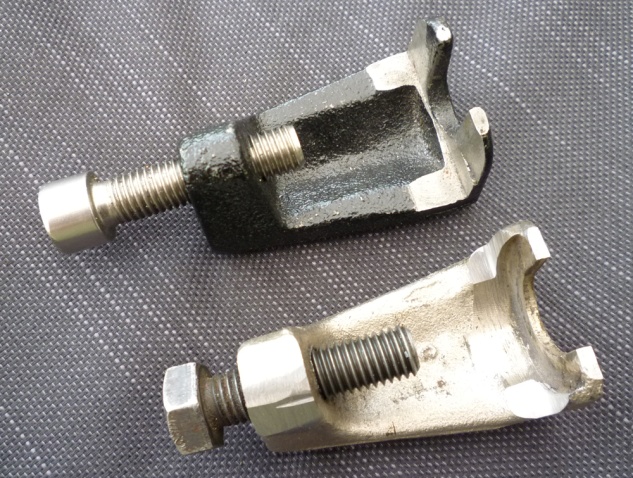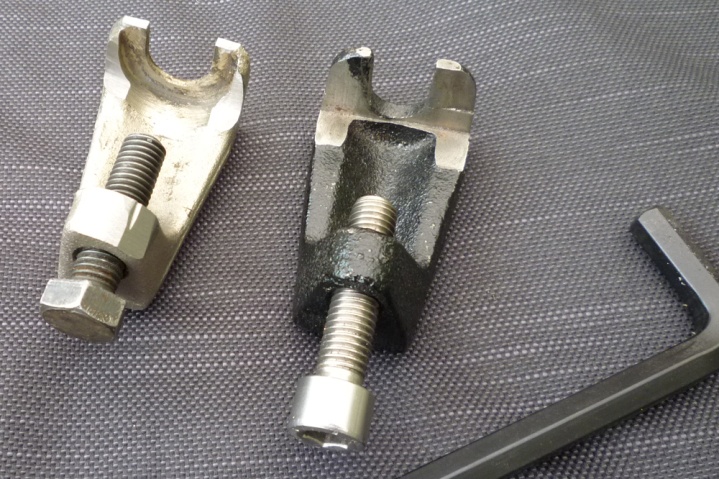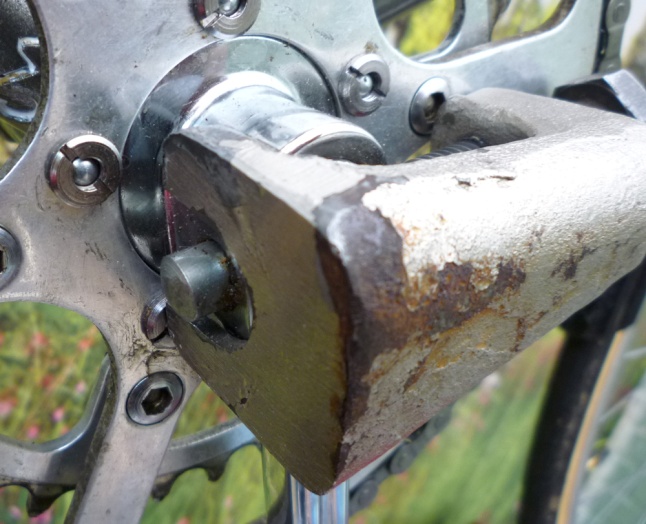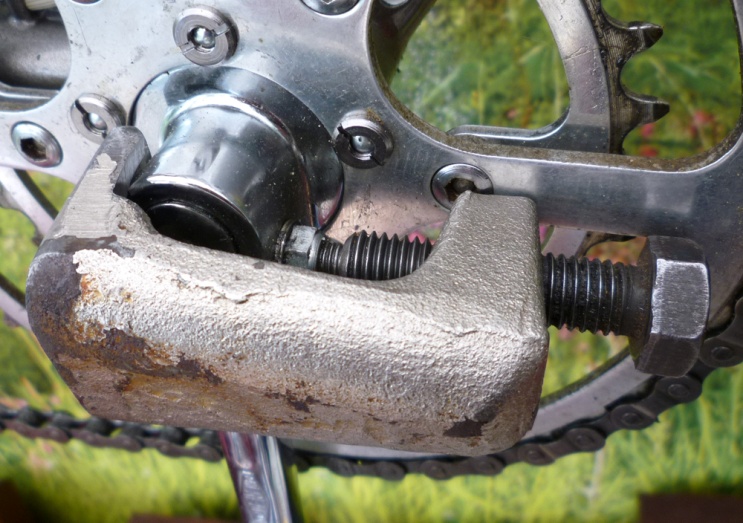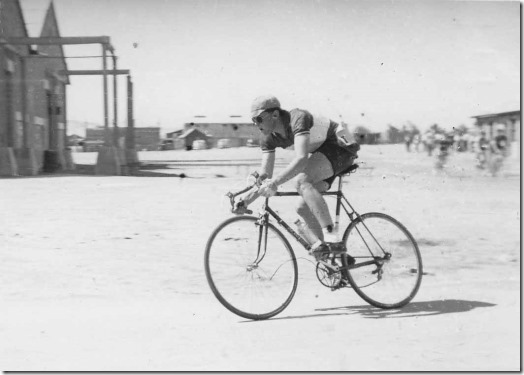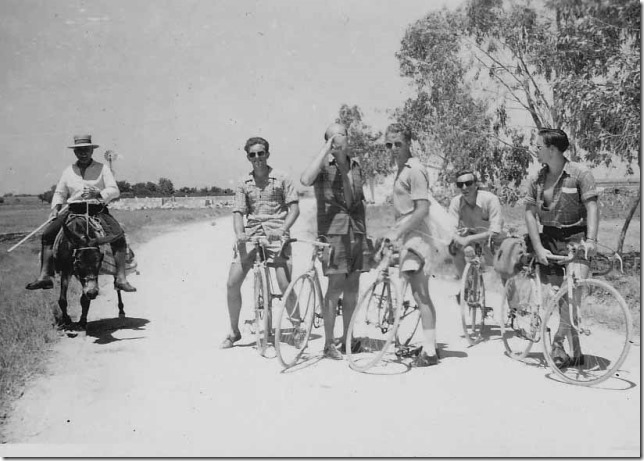Vol. 2, Issue 70 - July / August 2017
Posted: Sunday 16th July 2017
Since the last edition of Cambridge Lightweight News we have attended two exciting rides for classic lightweights. The first is the perennial Reading Lightweight Ride which we have attended for the last 20 years or so, only missing the odd one or two. When we first joined the then organiser Terry Pearce was providing one of the only events organised for lightweights in the UK. As a result of this the entry was often around the hundred mark. Over the years the numbers dropped a little but then picked up again to settle around fifty or so riders. Nowadays there are several rides each month for lightweights in the UK and sometimes they even clash with the Reading event so numbers are bound to be affected. What has not dropped though is the standard of bikes ridden and on this ride you would see an example of just about every desirable classic produced.
One of the reasons for the quality is that the organisers are quite strict in defining entry qualifications, necessary these days when it is not unknown for owners/riders of more modern machines to join in classic rides partly because they have a vague interest in older bikes but sometimes in order to get a ride at a pace and distance which suits them as they grow older. This is becoming something of a problem at times as it seems rather dictatorial to tell them not to come along, but some organisers are being quite strict and using L’Eroica parameters as a yardstick. I think these were designed to cut off before STI and Ergo levers came onto road brakes, along with clipless pedals. Hence the common date of 1986. This is a date used in classic lightweight circles but there are organisations around where early examples of bikes fitted with these outlawed components are sought after and quite valued.
I took my 1951 R O Harrison and Patricia her 1972 Flying Scot. For logistical reasons we left these with a kind friend after the ride as they were then to be on their way to Anjou-Velo in France a few weeks later. More of this to follow. We caught up with many old friends at Reading and created small groups of riders for both the outward and homeward sections. Due to the large number on the ride the organisers, now Garry Higgitt and Ricci Pankhurst following Terry’s decision to stand down, encourage the ride to split into smaller groups on the country lanes around the Theale area. A jumble takes place before and after the ride – I managed to dispose quickly of a good number of surplus components this year – as well as refreshments with home baked goodies at the ride HQ at Theale Village Hall. Although it is a fair drive for us (we also spend the night in Reading) we have never regretted making the effort.
After the ride we left our bikes nearby with the friend who was later transporting both the bikes and us to the Anjou-Velo Ride at Saumur in the Loire River area of France on the weekend of 24/25 June. We had booked up for the 60k ride on the Saturday and a 40k ride on Sunday. Anyone who has visited a social event in France will know that the French certainly know how to enjoy themselves and run a good do at the same time.
Over the weekend there were four rides each day and each ride averaged out at about four stops en route. These thirty-two stops provided food, wine, water and live music. I find it quite tiring organising a one-day event with a lunch stop and if lucky a coffee stop but to create some thirty-two for thousands of riders beggars belief. There was never any sign of stress or tension among the volunteers who could have been swamped by hundreds of riders to cater for over a few hours.
Both rides covered interesting ground including visiting a chateau, troglodyte dwellings, caves and even the world famous Abbaye de Fontevraud, resting place of Richard the Lionheart and his mother Eleanor of Aquitaine, her husband Henry II and Isabelle of Angoulême (wife of King John).
Anjou-Velo has its own style, taking the best of L’Eroica (with smooth French roads) plus the Tweed Run and combining them into a festival weekend enjoyed by all I met. The rides are randonée style, winding through vineyards, but with a 120 km version on the Saturday for those who want to take it a bit more seriously.
Obviously being France there was a preponderance of French bikes so the British and Italian bikes taken over by our combined group of fourteen created a lot of interest. As I said earlier, we took the same bikes used on the Reading Ride, R O Harrison (below) and Flying Scot.
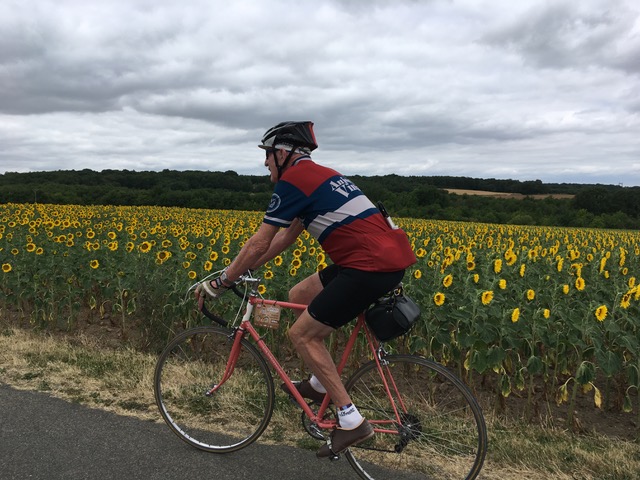
The dress code is either Le sportif (see above), Le décontracté (roughly Tweed Run style), Le glamour (chic French frocks and headwear for women), or L’authentique (classic French, maybe with a beret). The vibe is generally Fifties French but it is pretty relaxed. There is a “Concours d’Elégance” competition. Two days of “period correct” live music and a whole village of stalls selling vintage items and food (no, not vintage) add up to a great cycling festival.
Ebay scams
There are currently a series of scams involving cycle components on eBay but luckily they are easy to spot.
The method is that the scammer trawls items for sale, in our case shall we say using classic cycle parts advertised at a high price. Let’s say that a Cinelli badged stem is genuinely advertised at ‘Buy it Now’ for £300 with description and suitable images to promote the sale. The scammer takes the image and the description, and now lists for something like £50 – 75 which seems like a great bargain for the unaware. One assumes that some are taken in by this and pay for the item up front netting the scammer a fair amount of cash.
The tell-tale signs are that the sale is from China and offers free postage. The other sign that should raise suspicion anyway is that the seller has zero Feedback.
If you see something advertised on eBay at what seems to be a bargain price, please check carefully before parting with your money.
A Simple Cotter Pin Press: Bryan Clarke
I recently had trouble extracting a cotter pin from some cranks and mentioned this to fellow enthusiast, Terry Murton. He told me that he had been given a simple cotter pin press from an engineer friend and this device had never failed to remove even those most difficult ones. Whilst I have heard of these tools I have never owned one although I had purchased some drifts to help me hammer them out and avoid marking the cranks, which is so easily done. Terry offered to lend me his press which frankly made the job effortless. Examining the tool I soon realised that it had been adapted from a ball joint splitter of a type employed in the automotive trade with the fork end machined flat and reduced to allow it to fit over the crank.
I once owned one of these ball joint splitters that had not seen the light of day for thirty years when in the distant past I regularly repaired the cars that I owned. Having found this again in an old tool box I set about making my own press by grinding down and adapting it using a bench grinder. I am no engineer but successfully if crudely fashioned the device into a simple tool. Here are pictures of mine (the tatty one) and the one adapted by the engineer
Park Tools used to make such a tool but it is no longer available I believe. A version made by VAR can sometime be sourced but these are prohibitively expensive.
The ball joint splitters of the type I used are readily available for as little as £10. So there is an opening for someone enterprising here I think.
My new project is to retrofit a 1950’s Hamilton with all British components to replicate Evelyn Hamilton’s attempt on the 100 day long distance ride on such a machine. She exceeded her 10,000 miles record to clock up 12,010 miles. For the British components part of the retrofit I have chosen Constrictor Conloy rims as suitable for the project. But the availability of original items is very scarce and they are expensive.
I have found that DCR wheels can supply alloy rims in the correct (domed) profile. These are 23mm wide and available in 32 holes. Whilst this is correct for my front wheel hub, there is a 40 hole hub on the rear. David at DCR wheels can order 40 hole rims but needs a minimum order of 20 pieces. The rims are £60 each.
Please would you let your members and friends know of this proposal so that I judge the level of interest in ordering some of these rims, thanks.
Also, I have commissioned a replica merino jersey bearing the Hamilton Lorraine logo and name. The design reflects the colours of the French flag and is based upon the jersey that Evelyn was wearing in the photographs of the 1950’s. Unfortunately, I cannot access the design and colour template at the moment but your readers can contact me for further info. Thanks again. Contact: daustin158@btinternet.com
At long last I have just about completed a replica of my Sun “Sid Patterson” bike that I rode with the Exiles CC in the Suez Canal Zone, Egypt in 1953 – 54. After having the misfortune in the first place to be sent there in March ’53, I fell on my feet because, from a cyclist’s point of view, I was posted to RAF Kasfareet which was a huge camp with 2000 plus personnel, good facilities, the best cycling club in the Zone and on the Great Bitter Lake rather than being stuck halfway up the canal itself or even in the desert. On arrival I was shown the club workshop with a store room piled literally from floor to ceiling with bike bits. A lot of it was pure junk, some dating back to the WW2 years, but I set to and cobbled together a fixed machine of sorts and even raced on it in a couple of 25s.
Some four weeks later a batch of 8 brand new Sun “Sid Patterson” bikes, which had been ordered by the station sports/welfare organisation 14 months earlier, arrived and, because I had shown such enthusiasm, I was presented with one – on permanent loan for the duration of my posting. I couldn’t believe my luck! Although built with 531, the SP was pretty basic, having just a 4 speed by 1/8th Benelux, Williams C34 chainset, GB brakes and Dunlop steel wheels etc but I got my father to send out my sprints, a longer handlebar stem and one or two other bits.
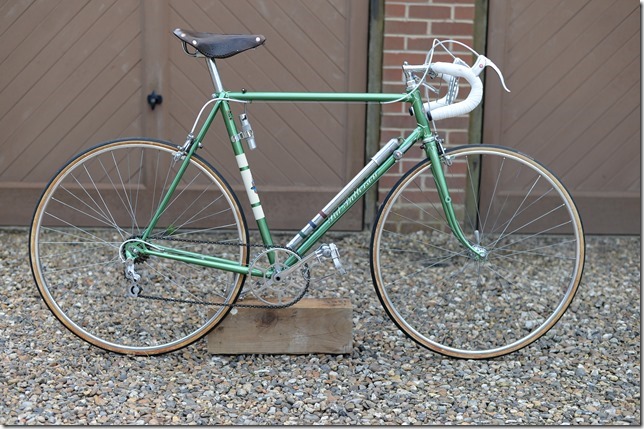
For the rest of my 2 years I enjoyed that wonderful machine. It was mostly racing and training but I enjoyed a 2 week tour of Cyprus (very much a peasant environment then before the EOKA campaign) and 10 days in Baghdad for a 100 kilo road race. I can still remember every detail of that bike and 2 1/2 years ago I decided to try and replicate the machine, in its racing mode. Little did I realise that I had set myself a whole series of various problems.
The VCC ME, Peter Cowan, was very helpful. He firstly painted a black picture of my ever finding a “Sid Patterson” but pointed out that SPs were really “off the factory shelf” Sun “Wasp”s which Sun Cycles re-badged as “Sid Patterson’s” in honour of their double world champion from Australia whom they were sponsoring. Therefore, Peter said, if I picked up a Wasp I could legitimately do the same – and Wasps certainly do become available from time to time.
Well, the luck I had had in the Canal Zone eluded me this time and, after some 18 months of scanning E-Bay, going to jumbles and generally passing the word around, I was still without a Wasp frame until my saviour, Terry Kearns, kindly offered me his beautifully presented one, complete with GB bars and stem and Sun’s own brakes (re- badged GBs). (See “Classic Lightweights. Restoration. Restoring a classic lightweight, Derek Athey.”). At first I was a trifle reluctant to accept because Terry’s was not the bog standard “off the shelf” frame that I knew was the equivalent of my Egypt one but was a product of Sun’s special lightweights division which was building bespoke frames in support of their professional team led by Les Scales and, of course, Sid Patterson himself. But I was desperate by this time and once seeing the elegant frame I was hooked! My original SP had no braze-ons at all, except for the pump pegs and a lamp boss, and my first impulse was to carve off the cable eyes, gear change boss and gear hanger but I soon thought better of that!
My first task was to take the frame up to Dave Yates in Lincolnshire who had done some work on it and had then sprayed it (in its Wasp mode of course). I too wanted some work done on it. Firstly, the top Nervex headlug had slightly come away at one point and Dave agreed with me that possibly the top bearing of the steel headset had perhaps been tight when fitted. I had bought a modern alloy headset which looked fairly traditional, a BBB, and would obviously be easier to smooth down so giving a ‘snug’ fit, and I left it for Dave to do the necessary rather than me filing it down after the respray. Secondly, when I came to fit my sprints out in Egypt, the frame was so ‘gappy’ that the blocks on the GB brakes would not reach the rims properly.
I got over the problem by filing the slots as far down as I dared but even then I had to carefully slice off the top ‘corners’ of the blocks from front to back to prevent them fouling the base tapes of the tubs – and then keep a wary eye on them as the blocks wore down. But what you could get away with in 1950s Egypt is obviously not worth risking on today’s UK roads, so I got Dave to reduce the frame clearances, front and rear – I had previously carefully measured up everything and found that there was ample bottom bracket clearance to do this.
By that time I had collected quite a collection of ‘period’ equipment but found that my original wheels – Weinmann sprints on Gnutti quick release – were virtually unobtainable. But I did have a pair of very early Fiamme rims, with the valve ferrule, which I had bought from Jack Baguley in 1955 and I advertised in N&V for any pair of sfqr hubs with steel barrels. Peter Beaven kindly answered my call with a pair of early Campag from which I took off the flanges and had the barrels re-chromed by Dug Heath at Baldock.
Whilst they were away with Dug, I had the good fortune to source a pair of mint condition genuine Gnutti QR spindles via E-Bay from Italy. So, when I had re-assembled the bodies and inserted the spindles I had my (almost) genuine period “Gnutti” hubs. (The evidence is that Gnutti and early Campag, together with FB and Frejus hubs were all made in the same factory, run by the Fratelli brothers – Fratelli Brivo – “FB”, anyway.)
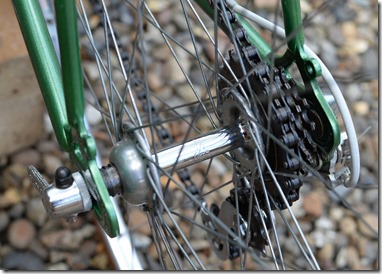
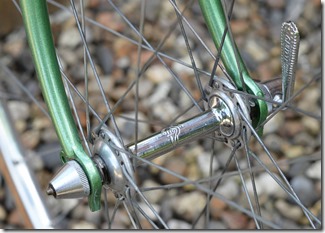
I had my old rims professionally polished, again by Dug, and the wheels built up by Chris Hewitt who still had a stock of 15/17 spokes suitable for the (un-drilled out) hub flanges.
I have two period items on the bike which I did not have to get – the Cyclo “Champion du Monde” pedals and the Pennine CO2 pump – because they are the actual items that I had in Egypt. Convention out there was that you only took bike equipment back to Blighty in exceptional circumstances. A chain of events led to me being able to take those items home. I carried the pump in every race back in the UK and unfortunately had to use it several times but it is still in pristine condition. Not so the pedals – the alloy bodies had gone a horrible dark grey and the plates were rusty.
I had to grind off the rivetted bodies from the plates, carefully leaving the spigots intact and get Dug to plate and polish as appropriate. When I collected them the bodies looked as bright and polished as the plates! I was then faced with the task of re-fixing the plates to the bodies and, after much deliberation, drilled into the alloy spigots and, using proper self tapping screws into barely gripping holes, using thread-locking fluid, ‘barely’ because I was afraid of putting too much strain on the old alloy forgings, I secured the plates. It was successful but the downside was that I could only buy self-tappers with ‘Phillips’ heads – showing it to be a ‘modern’ assembly!
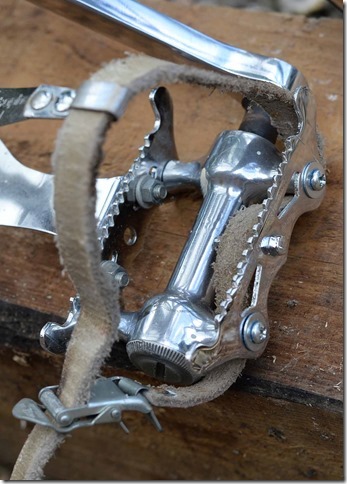
The frame’s gear hanger is a Cyclo one, therefore I thought it would be entirely compatible with the rather nice Benelux Mk 7 which I had sourced, not so – when I attempted to screw the swivel pin into the hanger it just fell through with the male and female threads not even touching! I was rather uncomfortable with the Mk7 anyway because it wasn’t introduced until 1957 but it was all I could find in my searches. I got over the problem by rigidly fixing the gear arm using the lock nut as a fixing nut.
It meant, of course, that whenever I needed to take the wheel out I would have to slacken the nut to allow the arm to swing back to clear the block. I “knew” then that I really needed to have the earlier Benelux which no doubt would have a compatible thread – at least I thought I “knew”! This set-back coincided with the large Chalfont St Peter jumble in May at which, lo and behold, I found said earlier Benelux – a ‘Sport’ which came out in 1952. It was very shabby and was the dearest gear on the table but I just had to have it. On the bench I partially dismantled it and cleaned it all up. Then I took off the Mk7 and presented my new old one to the gear hanger only to find that the threads were still not touching! Not only that but the swivel pin wasn’t long enough because the earlier one didn’t use the Adjustable Stop that the Mk7 had. So I had to cannibalise the Mk7 and file down the swivel pin to firmly fix the ‘Sport’ as before.
A further surprising hiccup was that the earlier gear would not take the 1/8th chain (whereas the later Mk7 did) and I had to pack out the jockey wheel cage with thin washers and, because the special screws holding the jockey wheels were of a very critical length, I had to find new (Imperial thread) screws and cut them to the precise length so preventing them from fouling the spokes when changing into the large sprocket. All this work – I console myself with the thought that at least I now had the correct period gear but it raises questions “Why does the Cyclo hanger have such a large thread and what on earth did Sun do to get over the problem – if indeed it was a problem to them with perhaps other bits of equipment available at the time?”
Fitting the bottom bracket was no problem except that the lightweight, drilled spindle that I had obtained turned out to be too fat for the Williams C34 (other chainsets would not fit either) so I had to reduce the diameter each side using my bench grinder – no wonder it was exceptionally cheap for a lightweight spindle at the Navestock jumble!
The two unlikely items that I just could not find were firstly, a basic steel, lugged handlebar stem about 3 to 4 inches long – until I went to this year’s ‘Boot and Back’. In the pouring rain I spotted a likely looking, rusty stem with just a slightly ornate front clamp lug which the stallholder seemed eager to part with for a couple of pounds.
When plater Dug skimmed the rust off he found “Dawes” engraved on it! Still never mind, it’s obviously of the correct period and fits the standard GB bend well. The second elusive item was a black 1/8th chain! There were several black 3/32s of course, but all the 1/8th chains were silver. Even Halfords didn’t have them in stock. I ended up getting the chain from E-Bay!
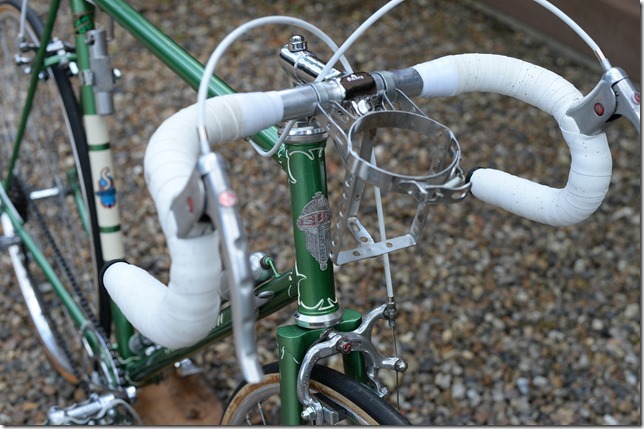
The picture at the top of this piece shows the complete machine in its Sid Patterson mode, sprayed in the original metallic green with cream band on the seat tube – Sid’s Australia colours. The original bike’s down tube had a facsimile of Sid’s signature but, as I could not obtain a decent illustration of it, I chose to have the name in standard script. The wheels are shod with Wolber Neo Pro tubs which I bought in 1966….yes 1966! I had seven old original tubs and for interest I tested them, five of those, including two lovely Clement 50s, blew out at around 70psi (I had turned off my hearing aids!) but the two Wolbers stayed intact even after pumping to about 110psi. I don’t think I dare use them on the road though, it would be too risky and anyway I have several brand new open sided retro looking Vittorias to put on for riding on the road.
Well, that’s it folks – I hope you’re still awake. On reflection, perhaps I didn’t have any more set-backs and problems than the average restoration. I can’t wait to show my SP to my old Exiles CC club mates at our next club run (after all these years 15 of us still meet 4 times a year) and, hopefully I’ll also be riding with some of you during the current season.
More about John’s adventures with RAF Egypt at
https://www.classiclightweights.co.uk/exiles.html
I believe I have mentioned before that we faced the loss of our storage place for our bikes and components, etc. This story went cold as it seemed that the developers were leaving our garages in situ, at least for the next few years. Now however we face the loss again as the plans have changed for the worse as far as we are concerned. The result of this is that we are having to start the cull again so we are offering the following for sale:
23.5″ Rondinella track – 1974 as shown in Readers Bikes
https://www.classiclightweights.co.uk/bikes/rondinella-pu-rb.html
Offered for sale as seen with track bars which, along with the stem are of a modern kind favoured by fixed-wheel enthusiasts – I will sell with a set of Cinelli Criterium bars on Cinelli 1A stem if the buyer wished to return to a more period correct trim. £650
23″ Mercian Super Vigorelli track – 1976 as shown in Readers’ Bikes
https://www.classiclightweights.co.uk/bikes/mercian-track-pu-rb.html
Offered in one of two trims:
1 – with cane sprints as seen near bottom of entry – £750
2 – with Mavic MA2 clincher rims – £700
19″ Gillott Spear 1947 – as shown in Readers’ Bikes
https://www.classiclightweights.co.uk/GillottSpear1947.html
£650
19.5″ Hobbs Superbe – 1948 as shown in Readers’ Bikes
https://www.classiclightweights.co.uk/bikes/hobbs-superbe-pk-rb.html
£700
Would prefer collection at Cambridge or mutual meet up at a V-CC ride in the UK
Also for sale, ideally collected, or meet as above, but if not postage at cost in the UK Can send image of any component you are interested in:
STEMS
2 x Cinelli 1A stems, 9 and 11cm – GC some slight marks below insertion point £35 each
CHAINRINGS
TA alloy 5-pin with alloy 5-pin to 6-bolt converter plus 56/53 chainrings £30
second set with 52/45 rings £30
Williams C1200 chromed chainring 50T, VGC no tooth wear – rare in this condition £15
Chater-Lea, as rare as it gets – alloy adaptor to convert to double complete with 47/44 chainrings (to allow Simplex T de F changer to cope) £45
BRAKES
Pair Universal Model 77 calipers (hexagon fitting) VGC £35
ODDS and ENDS
Pair of Cyclo alloy sprint wheel carriers £15
Pr Terry chrome spring clips for frame/pump £10
TDC unit BB (120mm axle overall length – your own will fit if of different length) £35
Pr new Simplex T de F pulley wheels £15
Zeus ‘tub’ holder which fastens in saddle rails Tub held by elastic strap with clip – £10
HUBS
Campagnolo all alloy SF QR front hub 32H – £25
Racelite 32h LF alloy hub 100mm AF £
GEARS
Collection of 5 Simplex T de F gears plus spares and downtube levers, also plastic rear changer. collection only. – £100
Rare Simplex 303 ‘Tourist’ changer takes 14 – 28 rear sprockets plus 20T difference at front. Ideal for providing a good selection of low gears on a period cycle. Badged version – 1960 catalogue. – £50
Posted: Sunday 16th July 2017
This article appears in the following categories.
Upcoming Events
Whether you are looking for a gentle social meet up, or a 100-mile ride browse the community’s upcoming events and plan your next weekend outing.

